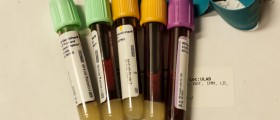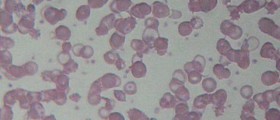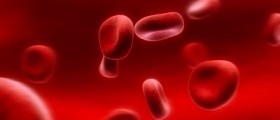
Sickle Cell Anemia Overview
Sickle cell anemia is a genetic blood disorder in which the red blood cells are of abnormal shape. Erythrocytes are C-shaped and of reduced elasticity. Normally, red blood cells are disc-shaped and there is a tiny hole in their center. Normal red blood cells are also elastic and can move easily through tiny blood vessels. The major problem in sickle cell anemia is accumulation of the red blood cells and formation of clumps. This is caused by the fact that red blood cells in sickle cell anemia are not elastic enough and cannot pass through tiny blood cells. This blockage eventually causes symptoms and signs of the disease.
The function of normal erythrocytes is to transfer oxygen into the cells. One particular protein of erythrocytes called hemoglobin plays significant role in this transfer. Unfortunately, in sickle cell anemia even hemoglobin is abnormal and cannot perform its function properly.
Symptoms and Signs of Sickle Cell Anemia
Erythrocytes are normally produced in bone marrow. Their life span lasts approximately 120 days during that period they deliver oxygen to all the organs and tissues. If there are enough red blood cells and if their structure and function is maintained the anemia will not occur. However, in sickle cell disease anemia affects patient in all cases. Namely, due to abnormal structure of erythrocytes they are prone to rupture and this is why their life spam is shorter than in normal erythrocytes. Furthermore, the bone marrow cannot produce sufficient number of new erythrocytes. These abnormal red blood cells therefore, cannot function properly and the body suffers from anemia. Typical symptoms of anemia are actually the symptoms which are noticeable in sickle cell anemia.
Apart from that depending on the localization of the clumps of red blood cells and the blockage the symptoms can vary from patient to patient.
Cause of Sickle Cell Anemia
This disease is hereditary. The person who is suffering from sickle cell anemia inherits two abnormal genes, one form the father and one from the mother. The parents are only the carriers of the defect gene and they pass this gene onto their descendants.
Prognosis of Sickle Cell Anemia
Unfortunately, there is no definitive cure for sickle cell anemia. Still symptoms and signs of the disease can be reduced and partially eliminated. In some patients bone marrow transplantation can be suitable solution.
The doctors are familiar with all the possible symptoms and signs of the disease and can offer the appropriate solution for specific complications. Now the life span of majority of patients is prolonged to late forties and fifties.

















Your thoughts on this
Loading...